Common Sense Says She Wins
I’ll see your polling averages and raise you ten reasons I think she’s got this.
Poll after poll blares the same message on repeat: It’s a tight race, basically a tie, and it will come down to a few thousand people in a few battleground states.
Poll numbers are easy to message, but they can be deceptive. The polls missed in 2016, 2020 and 2022 after all, and yet many still hang on them as gospel, or at least allow their steady drumbeat to shape national narratives and rattle collective nerves.
In a way, it’s better that we fight and mobilize like we’re the underdogs, or that the race is at best tied. Such a position drives more donations, more volunteer sign-ups and greater urgency leading up to Election Day.
But it does come with a big psychic cost. As one voter put it so succinctly: “I love that we’re all like YES KAMALA but we also have 2016 traumala.”
It can be a bit lonely—and it honestly takes a lot of checking myself for bias—to assure readers that things are going to be fine. But I believe they will be. As I like to say, I remain confident that if we show up, we win. Further, I’m confident that if they don’t show up (and they haven’t so far), we also win. Indeed, it would take a lot more of them showing up today to knock me off my soapbox.
I put a list like this together earlier in the election cycle, but now that we’re here together on Election Day, I wanted to lay out my updated thinking. Today’s piece walks through ten reasons why I remain cautiously optimistic and would much rather be sitting with the Harris campaign celebrating than with the Trump campaign preparing to challenge the valid results tonight.
So here goes, my ten reasons.
1. The Gender Gap
If you’ve been following my writings here and in The Big Picture, you know that I’m all about the gender gap. I believe the Dobbs decision, which ended the once nationally protected right to abortion, remains the defining feature of this election, as it was in the midterms and most special elections since 2022.
In the early vote so far, based on demographic data that includes the gender of early voters, there’s a 10 point gender gap in battleground states. That gap is very similar to the last two elections in which Democrats won in 2020 and 2022. But remember, even among women voters, the gap between Harris and Trump is wider than prior contests.
Otherwise put, there are already far more women voting than men, and among those women voters, there are a lot more women voting for the Democrat than usual. Some surveys are showing a high teens to 20 percent gap.
To overcome this, the gap within male voters—one that favors Trump over Harris—would have to be much bigger. But it isn’t. It’s actually quite a bit smaller, with around a dozen points difference.
So how does this gap play out today on Election Day? Let’s take a look at North Carolina, a state that is hotly contested. Here’s the early vote so far in 2024, compared to the final vote in 2020 and 2022, broken down by gender:
You can see that the gender gap so far is slightly bigger than the final gap in 2020. And we know that a lot more of those 2.3 million women who have already voted are choosing the Democrat than they have in elections past.
Let’s assume that on Election Day, we get to nearly the same total (5.5 million) voters overall, which looks reasonable to conclude. We’re at 4.24 million currently, so only around 1.26 million more to come in. North Carolinians like to vote early!
If trends hold, we’re looking at around 640,000 more women and 600,000 more men yet to cast their votes, if 2020 is any guide. Again, that’s still more women than men left to vote, and the polling says women are breaking for Harris more strongly than men are breaking for Trump.
Unless we see an unexpectedly huge surge of male voters—enough to swamp the number of women voters still remaining—and if women in North Carolina are indeed as angry about abortion rights and the GOP’s misogyny as women in other states, that spells trouble for Trump.
This same dynamic will play out in many of the other swing states, and that gender gap could, and should, prove too wide for Trump to overcome.
2. Older women voters
I highlighted an important piece of data on Sunday when the Selzer poll out of Iowa came out: Among women over 75, who are the most reliable voters out there, Harris is crushing Trump in Iowa, 63 to 28. That’s more than two to one in favor of Harris. It’s one of the key reasons Selzer showed Harris actually leading Trump in Iowa, which sounds insane but that’s what Selzer’s survey showed fairly consistently day to day over the length of the poll.
Trump won Iowa by over eight points in 2020, so this result is a 12 point swing to the left. But even a five point swing would be catastrophic; Selzer could be off by far more than she’s ever been off before, and it’s still bad news for Trump.
Plus, Selzer isn’t the only pollster to find that older women voters in the Great Plains are breaking heavily for Harris. As election analyst Prof. Michael McDonald observed, the Kansas Speaks poll, taken in late October, also showed a flashing warning sign for Trump, with women 65 and older going for Harris by a margin of 53 to 38 percent. Again, this was one of the reasons that Trump was only winning that state by five, when he won it by 14 in 2020. That’s a nine point swing to the left.
The Kansas Speaks is a small sample poll, and Selzer could well be an outlier this year, so I don’t want us to get too far out over our skis. But it would not surprise me in the least if the polling industry, which is mostly male, somehow missed one of the biggest stories that one of the few female pollsters actually caught: Older women have had it with Trump and are turning out in droves to punish him for the Dobbs decision.
3. Enthusiasm favors Democrats
One of the few things election watchers agree on is that 2024 is a “turnout” election—meaning, the side that has more of its voters take the time and effort to vote will carry the election. Another way to ask the same questions is this: Which side is showing more enthusiasm?
We have some clues that are worth parsing. As Dave Wasserman of Cook Political noted, a recent NBC poll sought to measure voter enthusiasm about the election by asking people to rate their election interest on a scale of 1 to 10. They’ve been doing this since at least 2008, and the results this year are telling.
A full 10 percent of men fewer would rate their interest in the election this year as a 9 or a 10, compared to 2020. Women have slipped only three percent. You can see that gender gap opening up in those different numbers. In fact, men are the least interested they’ve been in this election since NBC started tracking this going back to 2008.
Remember, the GOP has more men as a percentage of its composition than the Democrats do. Men make up some 48 percent of the GOP, while comprising only around 40 percent of the Democratic party. Somehow I don’t think that drop off in male interest is coming primarily at the expense of the Democrats, though it is important to note that there is also a drop off in interest among minority voters and young people relative to prior elections.
But how do the two parties compare, head to head? Gallup has been polling party enthusiasm for a long time, and the numbers also confirm that Democrats have the edge. In the latest survey, Democrats were 10 points higher than Republicans in enthusiasm at levels comparable to 2008 when Obama was running for president:
Note that this wasn’t the case just a few months ago, when Biden was atop the ticket. The gains and current gap are because of Kamala Harris:
I should note that Trump has had trouble filling his rallies in the battleground states and people are leaving them early—something that irks him to no end. Meanwhile, Harris is breaking records and drawing capacity crowds. It’s anecdotal, but the vibe is there for voters to see. And images of bored Republicans in half empty rallies are unlikely to inspire huge surges in voting today.
4. The favorability factor
Kamala Harris did something quite remarkable and unprecedented: She went from a net double digit negative favorability rating to positive, all in just a few weeks. Here’s a chart of her surprising, meteoric rise, where she went into positive territory—and stayed there—around September 22, according to 538 polling.
Meanwhile, Trump has remained in negative territory. A recent Marist poll put the two candidates a fairly wide 11 points apart on favorability:
CNN analyst Harry Enten noted that the less popular candidate has only won once over the more popular candidate out of the last 17 contests. (Of course, to be fair, that last time was Donald Trump back in 2016, but Hillary Clinton herself was also quite unpopular at the time, while Harris is in positive territory.)
5. The Latino vote
We may look back at this election cycle and point to the hate-fest at Madison Square Garden as a turning point. That was when the Trump campaign invited insult comics and racist, misogynistic jerks to become the face of the GOP with just weeks to go in the race.
The blowback from the Latino community has been strong, and it is shifting undecided voters. These voters may be struggling financially, and they may unfairly blame Biden / Harris for that, but they won’t stand by while being insulted and demeaned.
As I wrote yesterday, a Univision poll made clear that the ugliness and racism was breaking through to Latino voters:
“Over half of the Latinos surveyed indicated that the rally remarks influenced their likelihood of supporting Trump, making them more likely to vote for Harris,” the survey concluded. A full 64 percent of Latinos polled now support Harris, with just 30 percent for Trump. Among those polled, 69 percent felt the remarks were more racist than humorous, with just 17 percent saying they were just jokes and not serious. And 71 percent of Puerto Ricans surveyed believed that the remarks indicate racism within the Trump camp, even if the words were meant as jokes.
Puerto Ricans in particular were offended by Trump’s refusal to apologize for the “floating island of garbage” insult delivered by a comic who opened for him that night. Instead, Trump donned a garbage man outfit himself, which many Puerto Ricans felt was him doubling down, even if his intent was to mock Biden’s gaffe over his supporters being “garbage.” There are some 450,000 Puerto Ricans in Pennsylvania alone.
It certainly does not help the GOP that last night, Republican Vice Presidential nominee JD Vance referred to Kamala Harris directly as “garbage,” underscoring the misogyny and racism that many already believe infects the GOP.
6. The youth vote
Ever since the midterm elections of 2018 and the mobilization by the Parkland students, Gen Z has turned out in historically high numbers for young voters. Their presence in the battlegrounds in 2022 was enough to offset a Republican same-day election surge and keep the red wave from washing ashore.
While some polling suggested that young voters had soured on the Democratic party, with many pointing to the war in Gaza and the Biden Administration’s support for Israel as the cause, broader polls, especially those by the gold standard Harvard Youth Survey, showed that Harris continued to enjoy a 28 point advantage among likely voters under 30.
Based on early vote projections, the youth vote this year will likely meet or beat organizer’s targets, according to the Gen Z-led Voters of Tomorrow. That is especially evident in the Blue Wall battleground and Southern Swing states:
I should add that the polls rarely catch any of the momentum created by new voter registrations, which have been favoring Democrats ever since Harris announced her candidacy (and with a bit of help from pop star Taylor Swift).
Reports this morning already confirm long lines to vote across universities in the battleground states. It certainly does not look like young voters are sitting this one out. We’ll have to await the final numbers, of course.
7. Closing weak v. closing strong
I wrote about this at length yesterday, so I won’t spend much time here.
There is near uniform agreement in the media that Trump’s final weeks have been anemic and disorganized, filled with dark messaging, the airing of past grievances and old-fashioned fear mongering.
By contrast, Harris has drawn huge crowds with her message of hope and unity with a focus upon the future. This has the effect of making her the “change” candidate, even though ironically she is already in the current administration.
For late-deciding voters, this difference in vibe can mean everything, since they tend to be lower information and lower propensity. If Harris feels like a winner and Trump feels like a loser, if she feels up while he feels down, the undecideds will break her way. Her campaign feels it is now positioned to win those undecideds, and it sees a path to victory in each of the seven battleground states.
8. The Ground Game
We will look back upon this election and likely have as another takeaway that the ground game really does matter. And the Harris campaign has been running a supercharged one based on traditional door-knocking, phone banking and getting out the vote.
The numbers have been astronomical. In Pennsylvania this past Saturday, the campaign knocked on 807,000 doors. Vice President Harris even went to visit a home herself in Reading, Pennsylvania.
In addition, the campaign’s volunteers made 940,000 calls and knocked on 215,000 doors in Wisconsin, with another 721,000 phone calls with 256,000 doors knocked in Michigan.
The Trump campaign outsourced its ground game to organizations with little to no experience running such an operation, including Elon Musk’s America PAC and Charlie Kirk’s Turning Point USA. Those groups completely dropped the ball, and the GOP has been basically nowhere on the ground in the swing states.
The personal touch of a door knock can increase the probability that a voter takes the time to vote, sometimes as much as 20 percent. In a tight race, every vote is going to count, and the Harris team has left nothing on the field.
9. Trump has bet on young male voters
It was a strategic gamble. Trump knew he had to find new voters to make up ground from 2020, where he had lost the election. He needed to find new voters. But rather than move to the center and moderate his views, Trump tacked right, and hard. He sought to blunt the effect of his misogyny, the loss of abortion rights, and his status as an adjudicated sexual assaulter by pursuing the young male vote, often seeking support from men who are terminally online.
His pick of JD Vance as a new voice for a more hardline masculine right may have energized guys in game room chats and the X platform, but it also has turned off women by the millions.
And now that early voting is over, it is now clear that Trump’s strategy isn’t working, at least so far. Despite all of Trump’s appearances with right-wing podcasters, streamers and fans of extreme sports, young men seem to have taken a collective yawn to the election. Instead, young women have outpaced young men in early voting and first time voting. The early voting numbers are most striking among young minority voters, with higher turnout from this group and especially from young women of color.
Is it possible these men will make their way in overwhelming numbers to the polls today? Sure. But it’s just not very likely.
10. About those polls
I’ve written fairly extensively about how polls are unreliable, can only show movement over time, and can’t accurately predict the outcome because they are often more a reflection of the pollsters’ views than of real voters.
But I’m going to go off on them again here.
Many assume that the job of a pollster is to survey voters off the registration rolls, record the results, then tell us those results. But that’s not how it works. Instead, they massage those numbers by applying baseline assumptions about the probable make up of the electorate. Lately, these assumptions have drawn heavily from past elections, probably in a desperate attempt not to undercount the Trump voters once again.
I personally believe they have undercounted Harris support as a result.
It is wrong to assume 2024 will be like 2020 or 2016, or even 2022. This election in 2024 will be about what the voters think today. And to “squish” the figures into molds from past elections, which is what the vast majority of polls do, is a cowardly disservice. (Incidentally, Ann Selzer does not do this with her polling in Iowa.)
If you begin from the presumption that 2024’s electorate will look like 2020 and then force it into that mold in your final figures, of course you will get a more or less tied race… because 2020 was more or less tied, especially in the tight battleground races.
But what if—and hear me out—there was something huge that happened between 2020 and 2024, something that changed the electorate in very fundamental ways? A change that dissipated the red wave in 2022 and drove victories in statewide referendums for progressives in Kansas and Ohio? One that caused purple Wisconsin to elect a progressive state supreme court justice by 11 points or could even flip Iowa blue this year?
That thing, of course, was the loss of abortion rights in June of 2022, driven by the GOP-dominated Supreme Court with three appointees by Donald Trump. Ever since the Dobbs decision, Democrats have been outperforming their 2020 numbers soundly in special elections. But it’s not really accounted for in the polling today. No one is squishing their electoral models to account for abortion.
This past week was even more embarrassing for the polling industry. As the clock wound down on the election, most of them “herded” toward the center, with nearly all claiming a tied race nationally and in nearly every battleground. That is statistically nearly impossible, given the way polls are supposed to work. It now seems evident the pollsters are tweaking their assumptions to bring their polls into alignment with other polls so as not to stand out.
Nate Cohn of the New York Times arrived at the same conclusion. In a moment of candor, Cohn said recently of the industry,
Perhaps the very best reason to think the polls might underestimate Kamala Harris this cycle is simply that many pollsters are so concerned—understandably—about underestimating Mr. Trump.
It’s hard to overstate how traumatic the 2016 and 2020 elections were for many pollsters. For some, another underestimate of Mr. Trump could be a major threat to their business and their livelihood. For the rest, their status and reputations are on the line. If they underestimate Mr. Trump a third straight time, how can their polls be trusted again? It is much safer, whether in terms of literal self-interest or purely psychologically, to find a close race than to gamble on a clear Harris victory.
Forgive me if I have zero sympathy for an industry that appears to be working out its own trauma from years past by creating new trauma for the U.S. electorate today.
I know I’m out on a bit of a limb here saying the polls could be way off from the final tally after today. It could be that we really do see a repeat of 2020 and that it once again comes down to a few thousand votes in a few battleground states. We should prepare for that possibility, which is why the ground game matters.
But I would not be surprised if this race gets called far earlier than most predict, with Harris taking a commanding lead in key states that will get her to 270 Electoral College Votes. I’ve listed nine reasons above to stack up against the polls and the polling averages, and we’ll have to see who is right in the end. I’m ready to admit the pollsters had it right if this really is a nailbiter, but I feel more confident in the bigger picture and bigger forces at play.
I also believe that people who love democracy, who love freedom, and who see both of these values as existentially threatened by Donald Trump, understand the assignment far better than those who see this as just another election. That has me very hopeful that these are the folks who will turn out today to stand up against the threat and beat it back into the ground where it belongs.
It’s been a very long and tough road to get to this day. I am so very grateful to this community for all your encouragement and support of my daily writings. It is no small matter that, together, we raised over half a million dollars for the Harris Victory Fund and for tight Senate and House races. I am humbled by your contributions and buoyed by your determination and resolve.
Now let’s go win this.
Jay

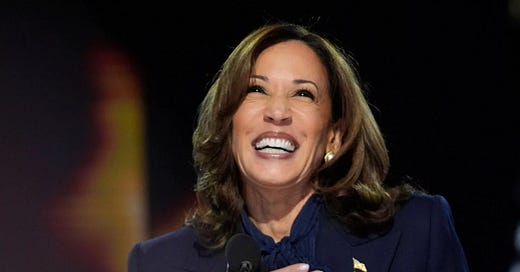



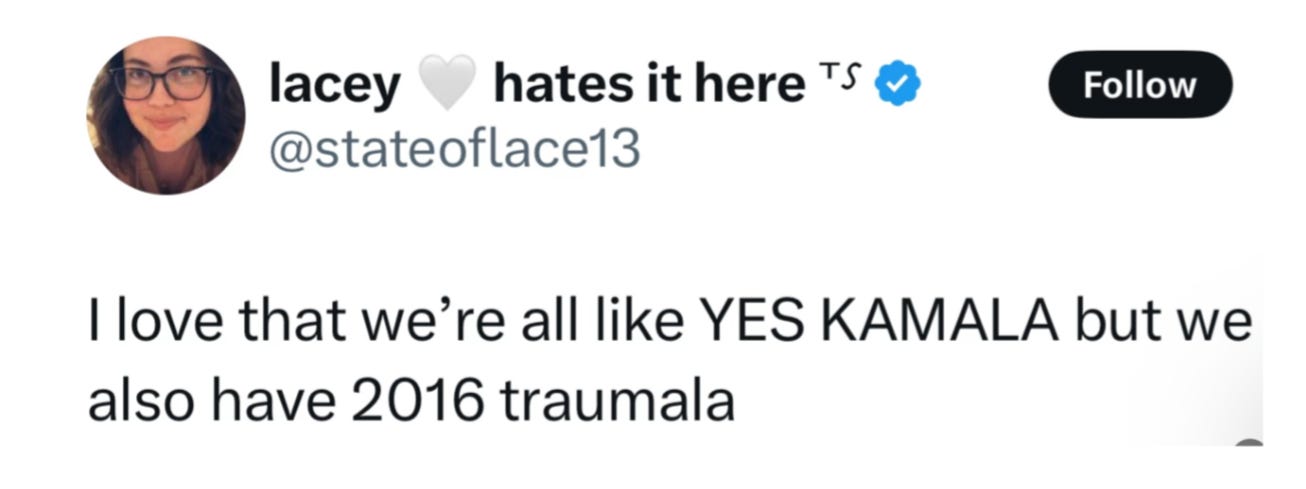
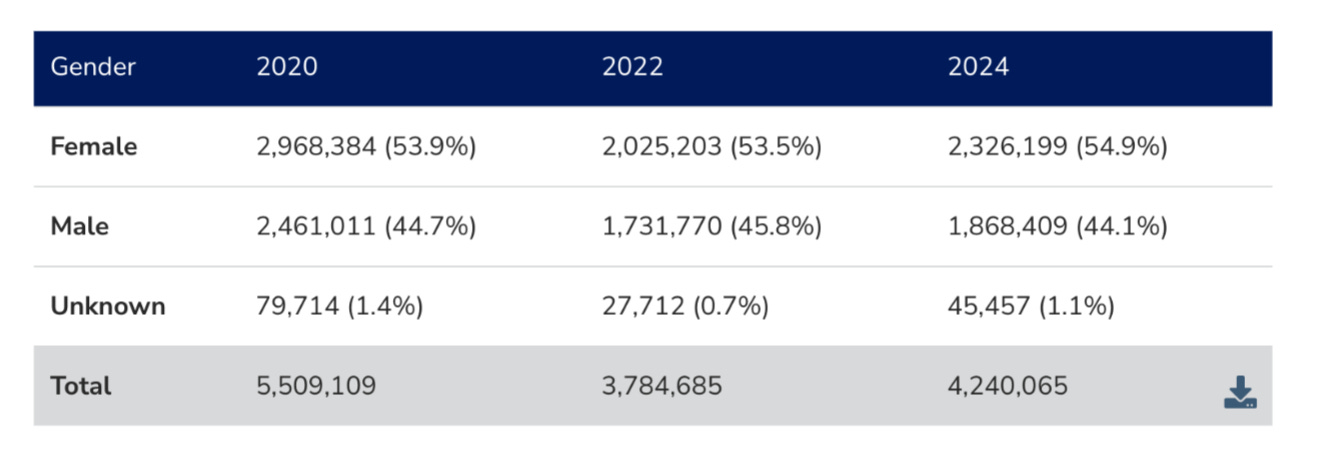
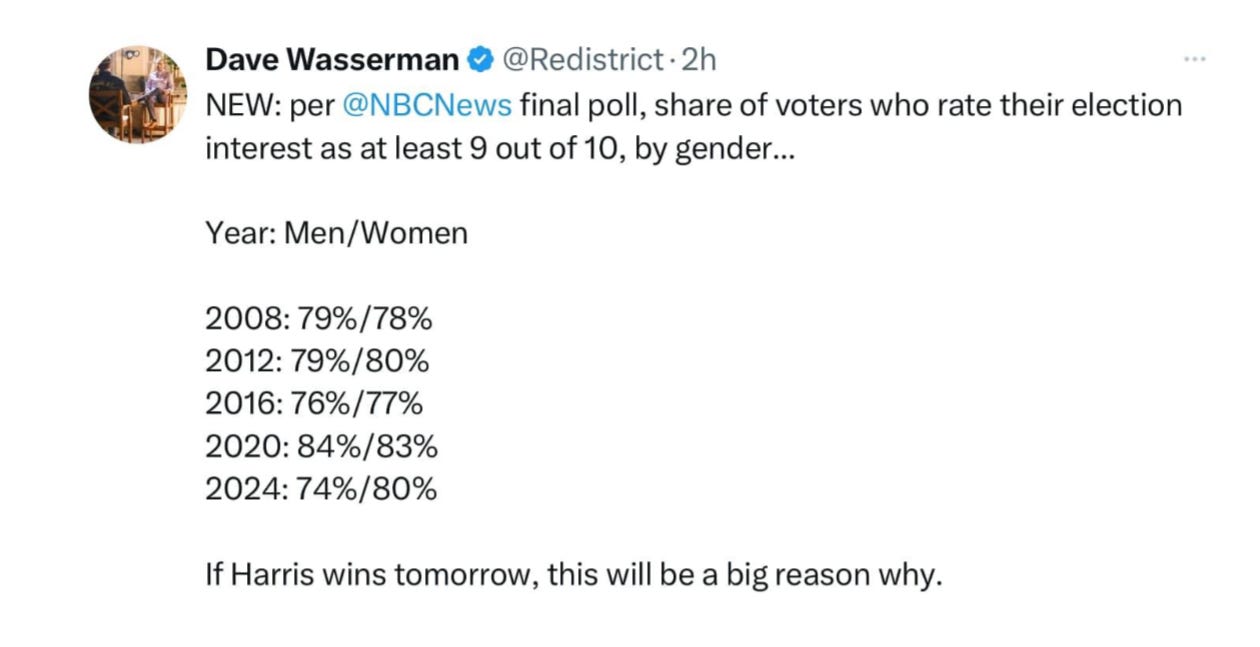
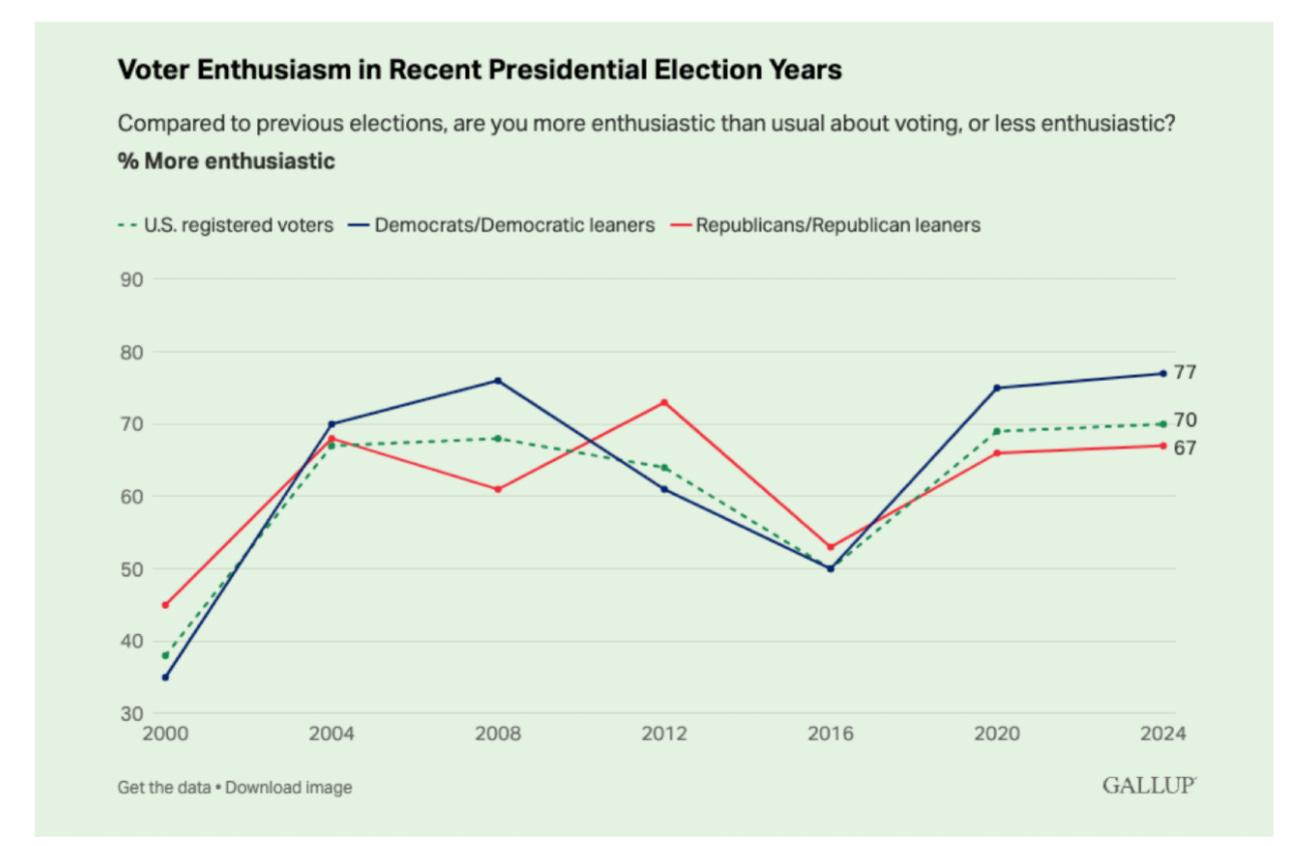
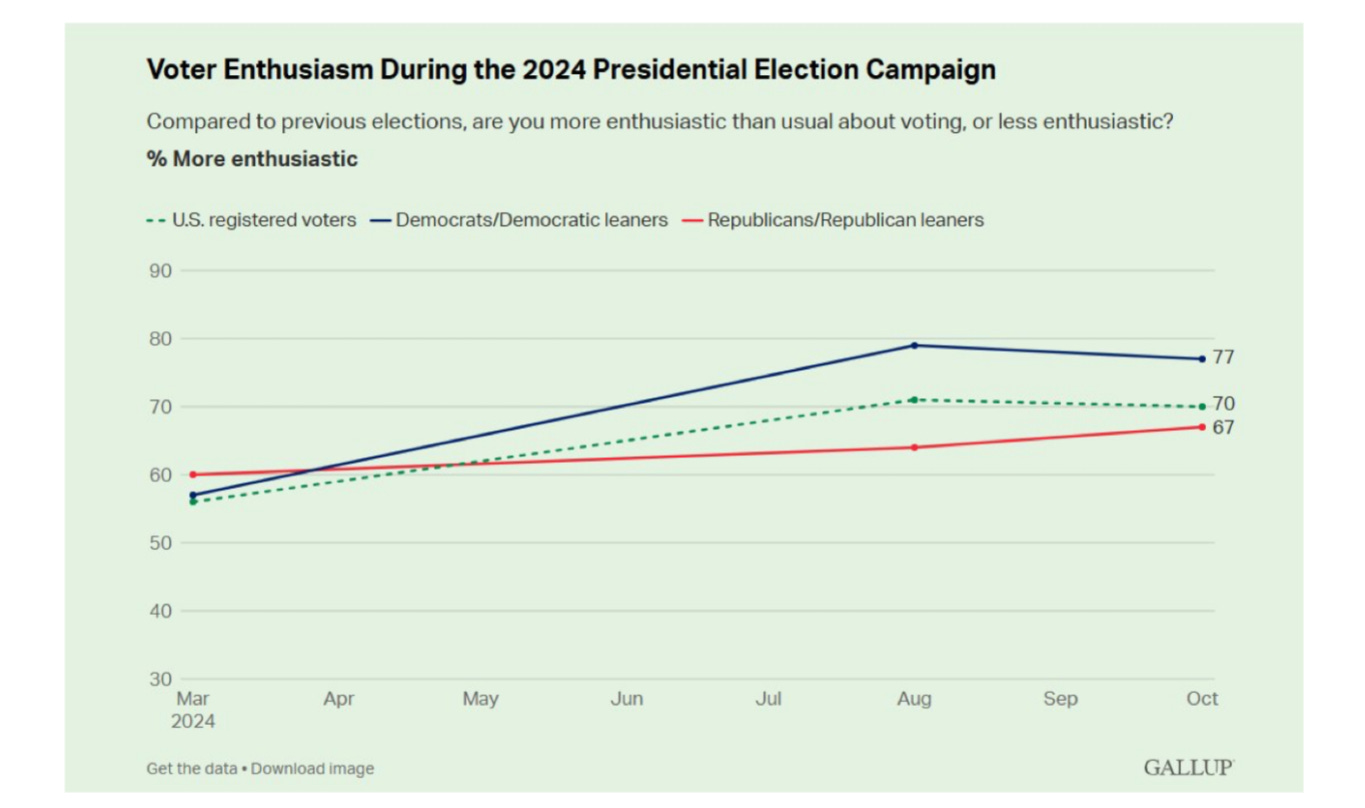
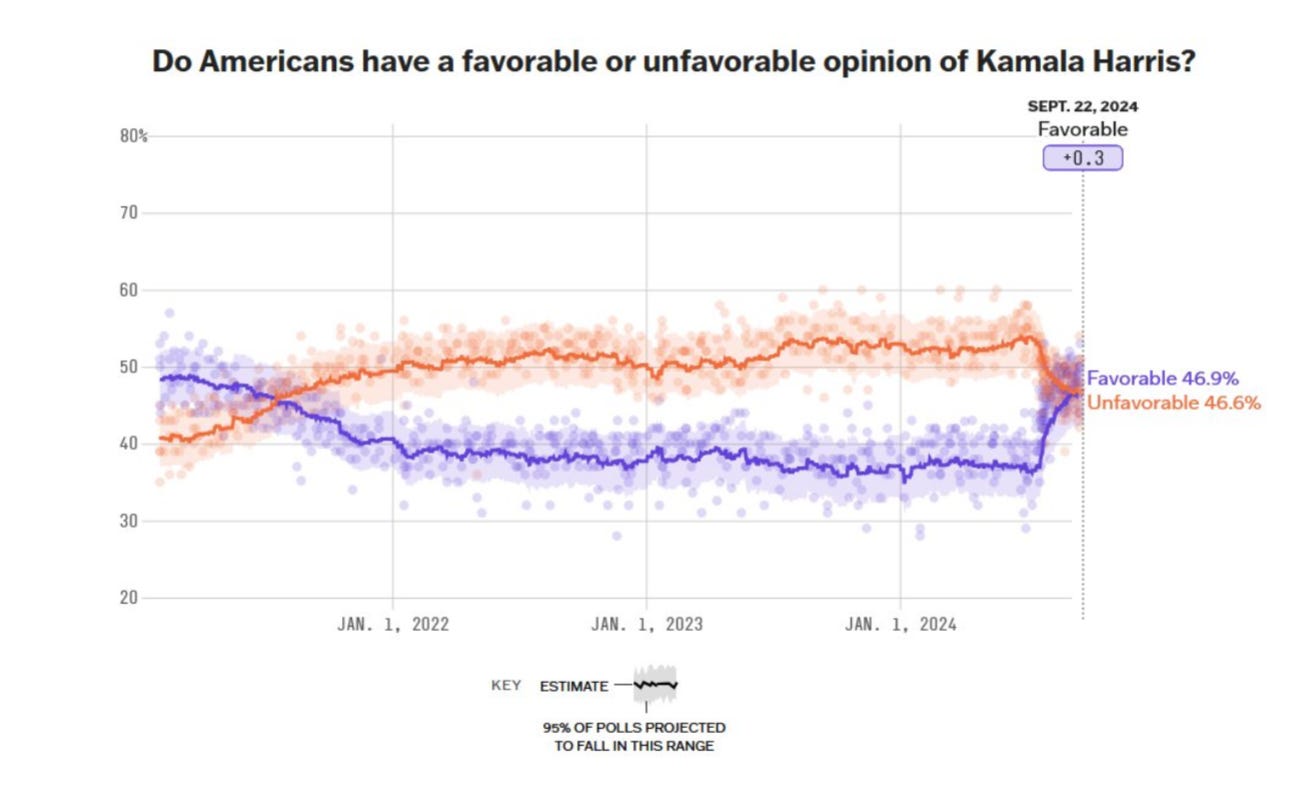
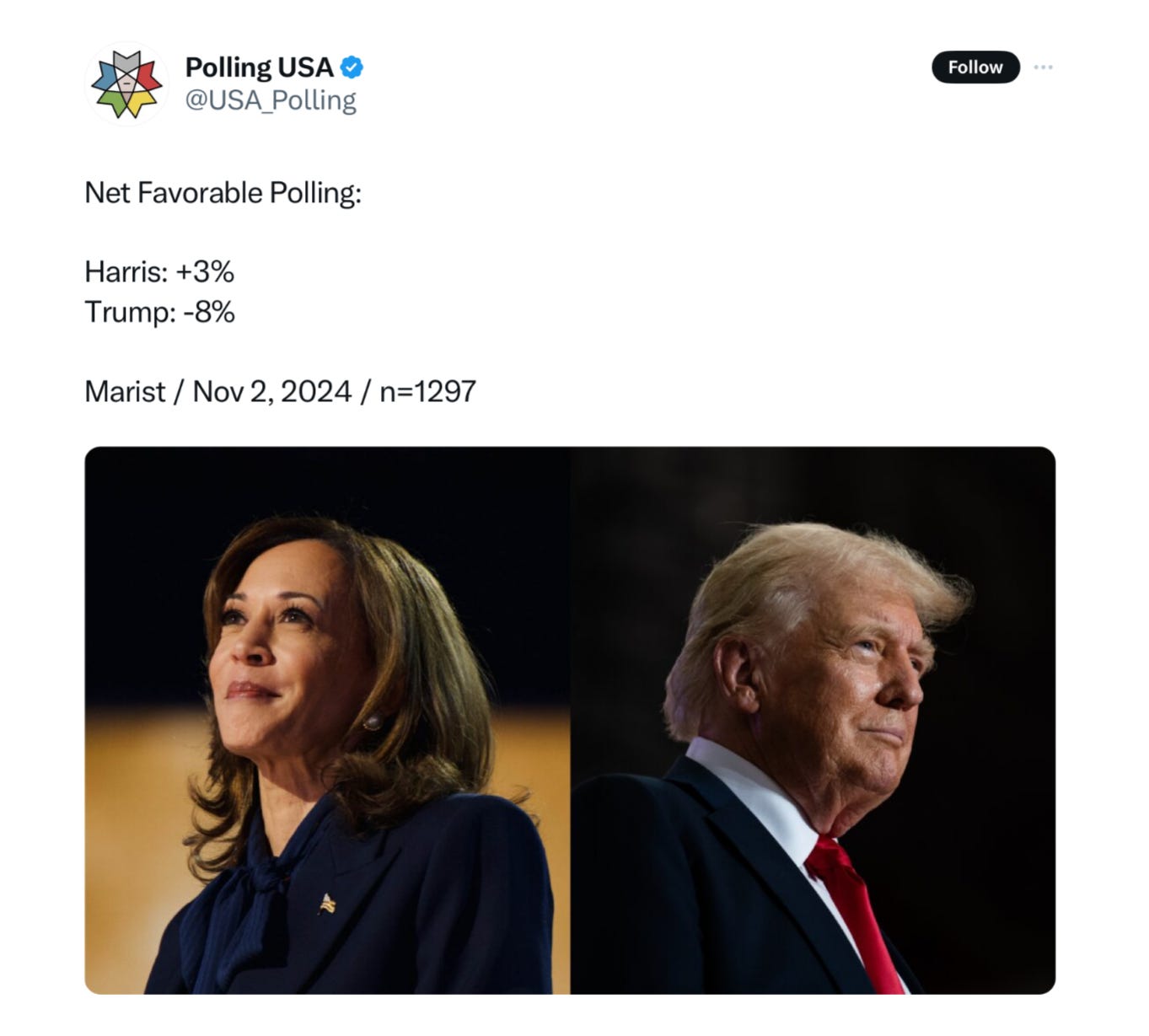
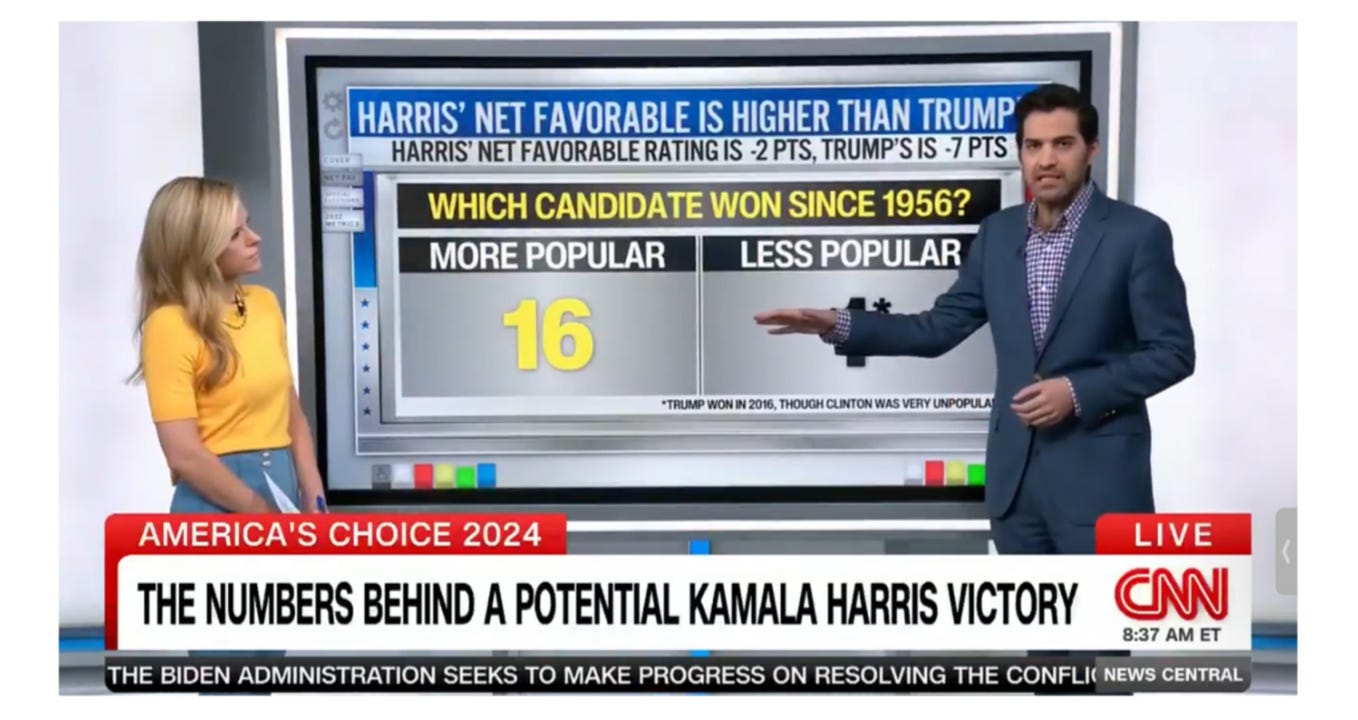

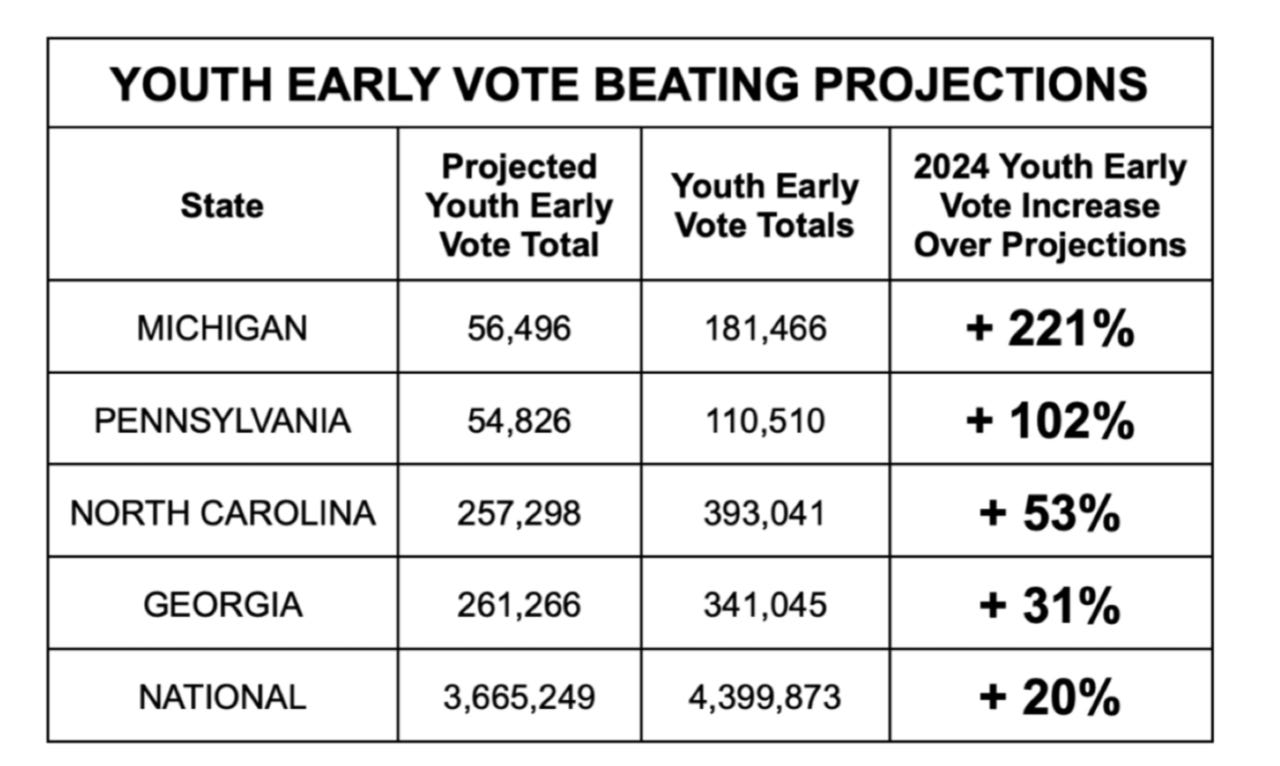
Jay Kuo: A great post, as your writing is logical and the passion runs deep.
Your analysis is very encouraging, and I hope to for Hakeem Jeffries to have a solid platform to be elevated to the Third in Succession to the Presidency, Speaker of the House.
Hakeem Jeffries will be one of the great Speakers in American History, and our future Speaker, Hakeem Jeffries, has a wonderful, powerful future ahead of him.
I am so very full of Kamala Harris, because she is running the most exciting campaign that we have seen since 1960 -- an election I remember quite well.
The 12-year-old Armando was very excited by JFK and Jacqueline Bouvier Kennedy, who promised a New Frontier, a very beautiful, new looking political scene, with rhetoric that reminded the then 12-year-old of Abraham Lincoln in the nobility of the English-language oratory.
How on EARTH can Fascist Trump/Vance garner more than 5% of the vote, with their hate speech.
Trump/Vance-Fascism violate the core principles in the American Polity founded upon "The Federalist Papers".
Kamala Harris must win, and she will be one of the best prepared and most inspirational leader among American Presidents in our history.
An age of Reconciliation must set in, and its only chance is under an Administration of Kamala Harris with House Speaker Hakeem Jeffries!
It isn't tight....it will be a landslide for Harris